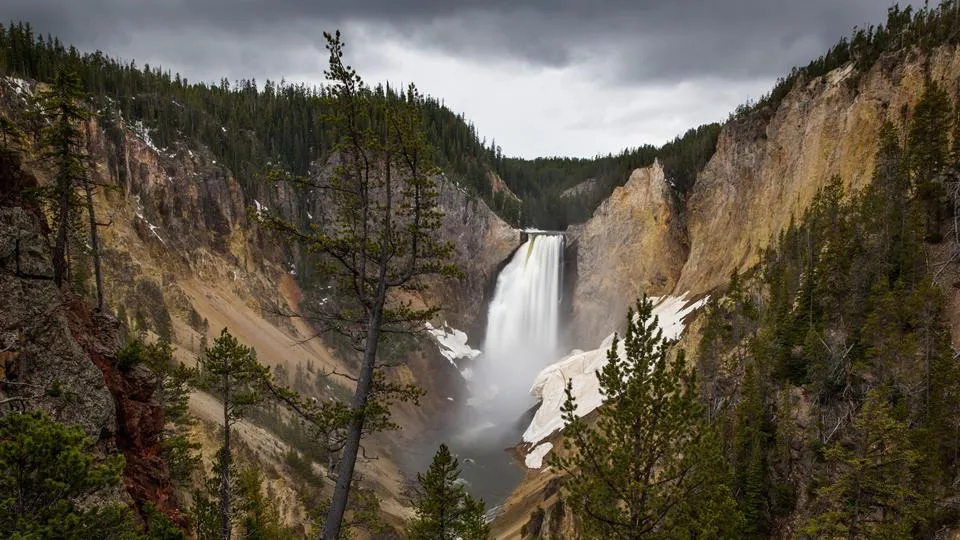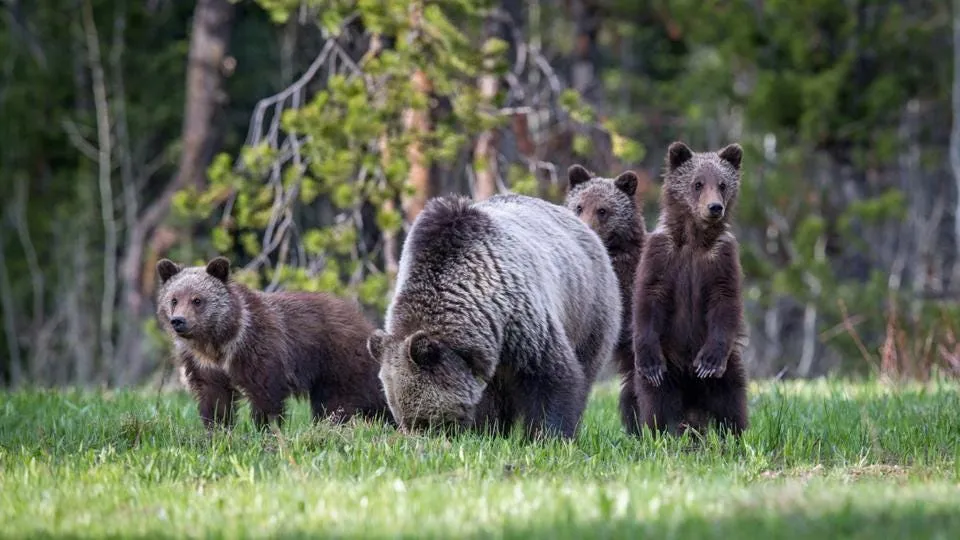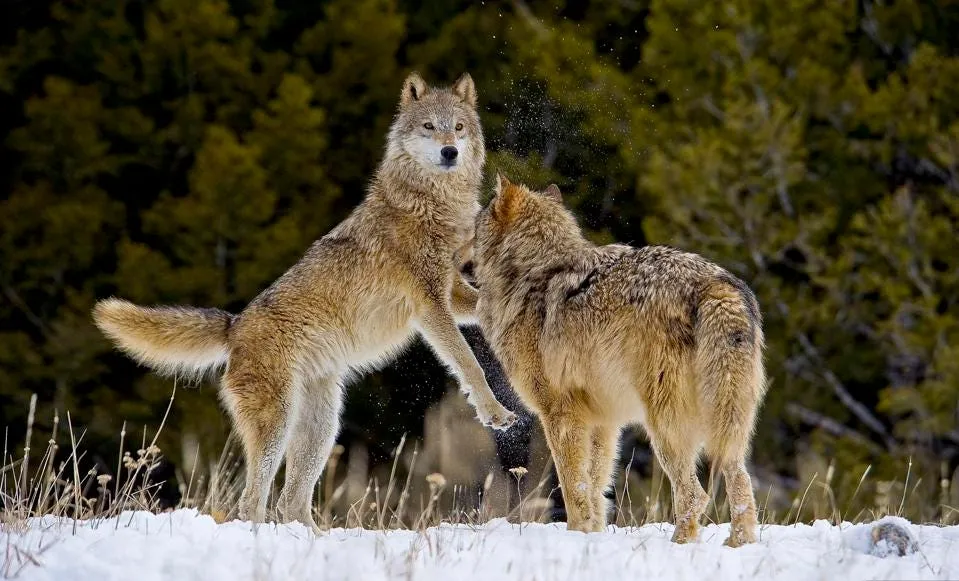Yellowstone, the first national park in the United States, is renowned not only for its unique geothermal wonders like the Grand Prismatic Spring and Old Faithful Geyser, but also as a wildlife paradise with an incredibly diverse ecosystem. From majestic bison herds leisurely grazing on vast grasslands to elusive wolves hidden deep in the forests, Yellowstone offers a rare opportunity for visitors to witness the untamed beauty of North America. This expansive national park is home to hundreds of different animal species, creating a vibrant and colorful tapestry of nature.
Diverse Mammalian World in Yellowstone
Yellowstone boasts an impressive 67 species of mammals, making it the area with the most diverse mammal population in the 48 contiguous states of the United States. Among them, large mammals such as bison, elk, grizzly bears, and wolves always attract special attention from visitors.
Bison – Iconic Symbol of the North American Prairie
Bison, also known as the American bison, are one of the most iconic symbols of Yellowstone. With their massive bodies, thick dark brown fur, and curved horns, bison exude a wild beauty and extraordinary strength. They often gather in large herds, leisurely grazing on the vast grasslands or moving along the park’s roads. Visitors can easily spot them in Hayden Valley and Lamar Valley, especially in the summer when the grass is lush and green.


Elk – Elegant Beauty of the Mountains
Elk, also known as North American elk, are another large mammal commonly seen in Yellowstone. With their tall bodies, yellowish-brown fur, and especially the massive antlers on males, elk possess an elegant and powerful beauty. They typically inhabit forests and meadows near forests and can be seen in various areas of Yellowstone, particularly the Mammoth Hot Springs and Madison areas. In the fall, visitors can hear the distinctive bugling calls of male elk echoing throughout the mountains.
Grizzly Bear and American Black Bear – Formidable Residents of Yellowstone
Yellowstone is one of the few areas in the United States that still preserves both grizzly bears and American black bears. Grizzly bears, with their large size and aggressive nature, are one of the apex predators of the Yellowstone ecosystem. Black bears are smaller and more docile, but still require respect and a safe distance. Both bear species are important residents of Yellowstone, playing a role in regulating prey populations and maintaining the balance of the ecosystem. Visitors may have the opportunity to see bears in various areas, but should be especially cautious and follow safety rules to avoid dangerous encounters.


Wolf – The Miraculous Return of an Apex Predator
Wolves were once nearly extinct from Yellowstone in the mid-20th century due to predator control policies. However, thanks to a wolf reintroduction program in the mid-1990s, the wolf population has rebounded strongly in Yellowstone. Today, Yellowstone is considered one of the best places in the world to observe wolves in their natural habitat. The northern part of the national park, especially Lamar Valley, is known as the “Serengeti of North America” due to its high density of wildlife, including wolves. Observing wolves requires patience and luck, but the experience of witnessing this apex predator in the wild is sure to be an unforgettable memory.


Other Mammals – Hidden Diversity
In addition to the large mammals mentioned above, Yellowstone is also home to many smaller but equally fascinating mammals, including coyotes, Canada lynx, red foxes, wolverines, river otters, and various species of squirrels, mice, and rabbits. Each species plays an important role in Yellowstone’s diverse ecosystem, and exploring this diversity will provide visitors with unexpected and exciting experiences.
Yellowstone’s Rich Birdlife
Yellowstone is a paradise for bird lovers, with over 300 different bird species recorded in the national park. From majestic birds of prey like bald eagles and peregrine falcons to colorful songbirds like mountain bluebirds and rufous hummingbirds, Yellowstone offers a rich and diverse bird world. Yellowstone’s lakeshores, rivers, meadows, and forests are all habitats for different bird species, and visitors can easily observe birds everywhere in the national park.
Underwater Life – Fish, Amphibians, and Reptiles
Although not as famous as mammals and birds, Yellowstone’s underwater world is also noteworthy. The national park is home to 16 different fish species, including cutthroat trout, an important native fish species of the Yellowstone ecosystem. In addition, Yellowstone has 5 amphibian species, such as the boreal chorus frog and tiger salamander, along with 6 reptile species, including the prairie rattlesnake and common garter snake. These animals play an important role in the food chain and ecological balance of Yellowstone.
Tips for Spotting Wildlife in Yellowstone
To have the best chance of spotting wildlife in Yellowstone, visitors should note the following tips:
- Go early or late in the day: Wildlife is most active in the early morning and late afternoon, when temperatures are cooler and there are fewer people around.
- Use binoculars and spotting scopes: These tools will help you observe animals from a distance without disturbing them.
- Look for animal signs: Pay attention to footprints, droppings, scratches on trees, and other signs indicating the presence of animals.
- Be quiet and patient: Wildlife is very sensitive to noise and movement. Stay quiet and wait patiently, you will have a better chance of seeing them.
- Learn about the habitats of animal species: Knowing where the animals you want to observe typically live will help you focus your search in the right areas.
- Join guided tours: Local guides have experience and extensive knowledge of wildlife in Yellowstone, they will help you increase your chances of spotting animals and provide interesting information about the species.
Safety When Observing Wildlife
Wildlife viewing is a wonderful experience, but it is important to always put safety first. Here are some safety rules to follow:
- Keep a safe distance: Never approach wildlife, especially bears, wolves, bison, and elk. Always maintain a distance of at least 25 yards (about 23 meters) from most animals and at least 100 yards (about 91 meters) from bears and wolves.
- Do not feed animals: Feeding wildlife is dangerous and illegal. This can cause them to become habituated to humans, lose their natural instincts, and create dangerous situations.
- Do not disturb animals: Avoid making loud noises, do not throw rocks or try to chase animals. Respect their natural habitat.
- Be aware of your surroundings: Always observe your surroundings to detect early signs of danger, such as animals approaching or changing behavior.
- Carry bear spray: If you are hiking in areas inhabited by bears, carry bear spray and know how to use it.
Wildlife Conservation at Yellowstone
Yellowstone National Park plays a vital role in the conservation of North American wildlife. The national park is not only a safe haven for many animal species, but also a natural laboratory for scientists to study ecosystems and effective conservation measures. Visitors to Yellowstone also contribute to conservation efforts by following park regulations, respecting nature, and supporting conservation activities.
Exploring the wildlife of Yellowstone is an exciting and meaningful journey. Witnessing rare animals in their natural habitat firsthand will make visitors love and cherish the beauty of wilderness even more, while raising awareness of environmental protection and animal conservation on our planet. Yellowstone is not just a tourist destination, but also a symbol of conservation and a source of inspiration for nature protection efforts worldwide.